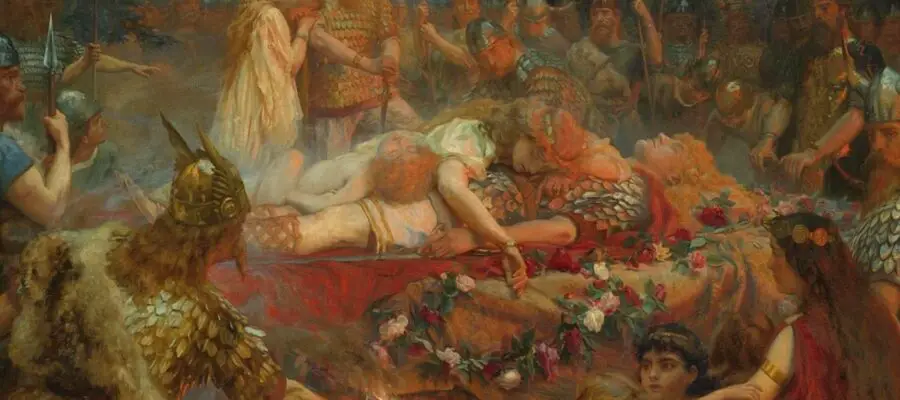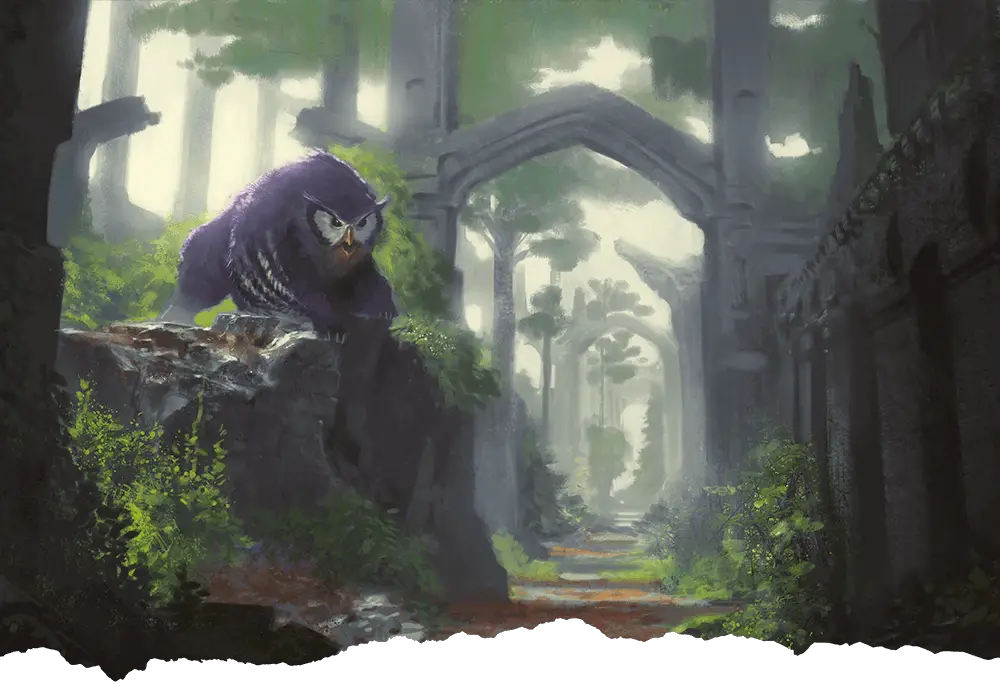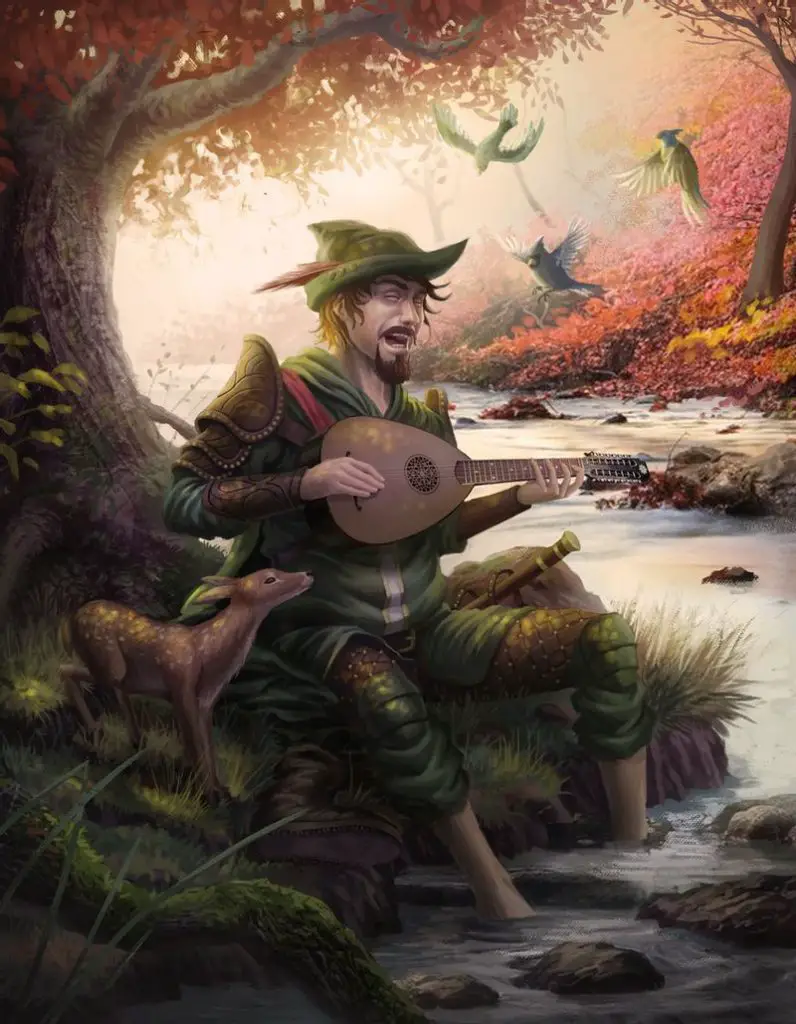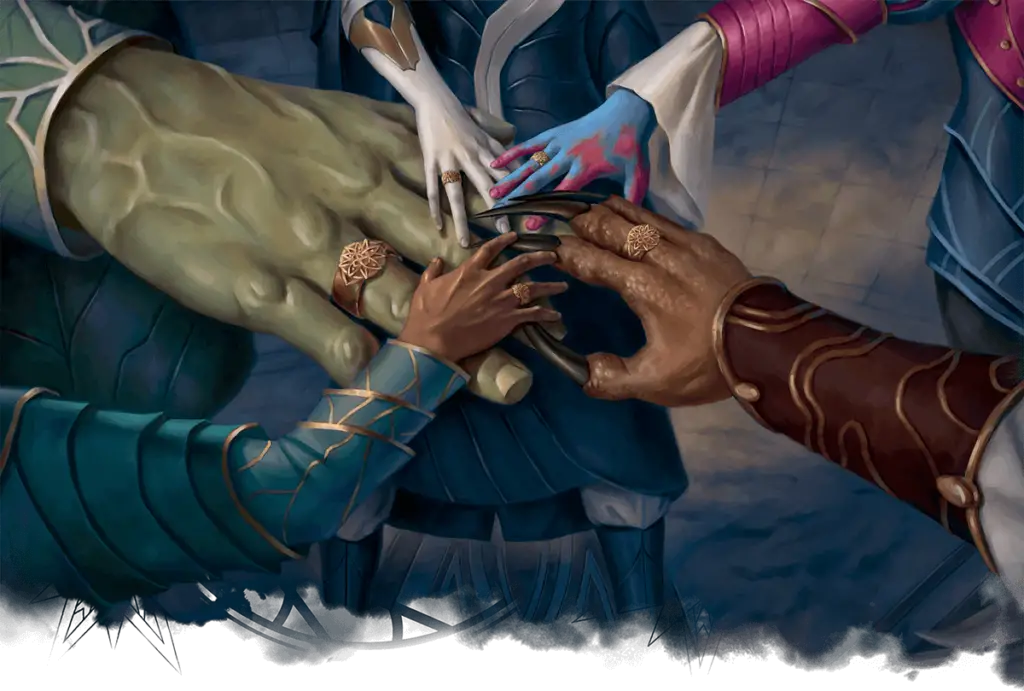Death and the afterlife are noticeably ambiguous concepts in Dungeons & Dragons games. Dead characters rarely receive funeral rites or other memorials. Maybe the ambiguity is owed to avoidance of touchy real-world subjects or attempts to not dwell on dark, depressing segments of our games. Whatever the reason may be, I think we can look to the many cultures of the earth for inspiration on how to handle death in our games.
Here are notable real-world examples to bring your game’s world to life. Some of them are pretty dark, so I don’t recommend using them for inspiration. I’ll still include them in my list because I did the research already and some people may like a Game of Thrones type of game.
As a quick premise for this article, I’ll only briefly cover different concepts. I encourage you to research any concepts that sound interesting!
Funeral Rites and Burials
Honey Mummy: Mellification – This might ruin honey for you, but some people used to mellify themselves; they preserved their remains in honey to create a healing confection. Legends say the dying people would limit their diets to honey until sweat and excretions were composed of only honey. Baths were made of honey rather than water. When the dying donor passed on, the body was placed in a stone coffin filled with honey. After about a century had passed, the resulting confection would be harvested and sold at market at steep prices. Buyers would apply the confection as a balm to heal wounds and fractures, and some would consume it for internal cures.
Sky Burial – If the ground is hard, burials are not practical. Chopping up bodies and covering the meaty bits in flour will attract scavenging birds to take care of the clean up. The deceased will return to nature in this way as the birds consume the remains and take to the skies.
Dance with the Dead – Some cultures bring out their dead every few years to dress them up and dance with them. This tradition honors the dead and is meant to feel like a family reunion. This practice implies a culture’s deep respect for ancestors.
Cliff Burial – Burials can take place in caves or upon a cliff’s suspended shelves with skulls on display. The bodies are placed on whatever cliffside is available, even if it’s just a man-made shelf. Skulls may be displayed for the people below to see.
Prestige Funeral – Some cultures believe a life is only as good as the crowd that shows up to its funeral. Public funerals include debaucherous activities to attract more people to ‘mourn’, including strippers. The good times are also considered to stir up spirits. The better the party is at your funeral, the more respect you get, and the easier it is for your spirit to rest.
Cremation Bead – If you have the money to pay for it, your loved one’s cremated remains can be turned into fine jewelry. In the care of skilled jewelers and morticians, diamonds and other beads can be crafted from ashes. The survivors will remember the deceased when they handle the ash-crafted jewelry. Theft of these precious jewels would be especially loathsome and disrespectful.
Fantasy Coffin – Basically just interesting coffins shapes and designs. Do you want to be buried in a banana? Prestigious coffins have resembled warriors crafted from rare earth minerals such as jade. A coffin may reflect the profession or skill set of the deceased.
Professional Mourning – The Bible and other religious texts mention professionals who are compensated for lamenting or delivering eulogies to comfort grieving families. This job is highly esteemed in some cultures. Maybe your bard can make some side coin as a professional mourner.
Endocannibalism – Also called ‘learned cannibalism’ (as opposed to ‘survival cannibalism’). The living person will consume their kin’s flesh, bone meal, or cremated ashes. The kinship can be based on a variety of affiliations, including family, society, tribe, etc. Some tribal leaders maintain their right to rule through the practice of cannibalism. Some chieftains are said to gain power from the flesh of an infant from their tribe (sounds despicable to me). Using this concept in a game would be very dark…
Exocannibalism – Based on hatred, rage, disdain, and humiliation, warrior tribes have a supposed history of cannibalism. It was considered a grave insult for a warrior to excrete an enemy. Warriors would also keep the heads of their enemies to mock the deceased’s allies and loved ones.
Self-Mummification – Monks prepare for death and cut out the mortician as a middleman. Their diets change to reduce fluids and consume poisons. When they’re ready to die, they go to a cave to be sealed inside.
Cremation Mixtures – Tupac’s cremated remains were allegedly mixed with marijuana to be smoked; his family was not happy to hear about it. In D&D, a character’s ashes could be mixed with a similar material that would mean something to the character. Whether or not the remains would be smoked is up to you, but maybe you’ll settle for mixing ashes with cheese or something.
Exposure: Tower of Silence – This is a tower atop a hill where bodies are heaped because the body is a host for defilement, sin, and disease after death. If you don’t want to defile either earth or fire, the best option is to raise the bodies to the sky and let vultures take care of the bodies. But if vulture populations diminish, you might have a problem…
Cleansing the Dead – A Maori tradition was to bury the dead and dig them up later to clean away signs of rot. After properly cleansing the dead, they would be buried again. It’s like the previous example of dressing up and dancing with the dead, but this seems less fun and more dignified.
Jazz Funeral – Musicians will follow the deceased from funeral to gravesite. A haunting jazz dirge will set the somber mood during the march, but afterwards the music will become merry and hopeful. There may even be a party at the end. It’s a rollercoaster of emotion.
Skull Upkeep and Display – Months after a soul’s departure, a body is exhumed and the skull is taken to be polished, oiled, preserved, and displayed in the surviving family’s home. Offering may be offered to these skulls in the form of food, tobacco, and other goods as the remains become a family shrine. Skull shrines really bring a living room together.
Totenpass – The ancient cults of Orpheus and Dionysus and similar religions carried passports of the dead. These passports were tablets of stone or metal, featuring a depiction of the deceased owner on one side. The other side included instructions to navigate the afterlife.
Memorial Coral Reef – A company called Eternal Reefs will compress remains into a ball to be attached to an ocean reef. The remains develop as part of the reef, offering a habitat for ocean life.
Sati – This funerary practice forced a widowed woman to be burned alive with her husband’s remains in a funeral pyre. It is suggested that this practice began as a hindrance for any wife who might kill her wealthy husband and marry another lover. Another suggestion is that the practice was meant to prevent the deceased man from being taken by opportunistic female angels. Yikes!
Viking Chieftain Funeral – This is another one that I don’t recommend for a D&D game. It basically involves the intoxication, rape, and murder of a slave girl to transform the chieftain’s lifeforce. The bodies would then be burned in boats together. I think most people would just picture a dignified boat fire to honor a dead warrior, so that’s what I’d recommend instead of the wicked, superstitious stuff.
Ritual Finger Amputation – Any woman or child of a deceased man would amputate a portion of a finger. This ritual was thought to satisfy and dispel spirits, but it’s also meant to use physical pain as an expression of mourning. The amputation method was to tie a tight string around a finger and then chop it with an axe. Amputated pieces were dried to be stored or burned.
Mortuary Totem Poles – A body is crushed to a pulp and stored in a wooden box for this ritual. The box is placed atop a totem pole at the dead person’s longhouse where the icons would guide the spirit to the afterlife. The smell would linger and be off putting to outsiders, however.
Aboriginal Mortuary Rites – For this rite, a body would be placed on a raised platform and covered in foliage to decompose. Liquids leaking from the body would be rubbed over young men’s bodies so that they could inherit the best traits of the deceased person. Bones were later retrieved and painted to be placed in caves and logs, though sometimes worn by relatives for one year. Some tribes refused to speak dead people’s names or use their property, discarding it so the spirits of the dead would move on from worldly ties.
Tree Trunk Burial – Trees make excellent coffins. A tree with a hollowed-out tree trunk will be selected to house a person’s body for eternity (or at least the life of the tree). This practice can only work in an area with plentiful trees of sufficient size.
Donated Corpse – Corpses can be used for scientific study or forensic, law-enforcement training. In a modern world, organs can be donated to living people. Maybe a wizard casts Gentle Repose in order to preserve a corpse’s organs for donation. This would fit in a high-magic world where magic is being utilized for medical science.
Compost – Every druid loves a good compost bin. The deceased may be turned into compost for use in gardens and groves. Corpses can be added to carbon-rich mixtures to decompose for several weeks before returning to the earth.
Afterlife Concepts:
Major Religions – I’ll touch on some of these concepts, but you can read a comprehensive overview of afterlives according to real-world major religions here.
Aztec Circumstances of Death – Your otherworldly reward is determined not by how you live, but how you die. The gods have many uses for mortal souls once departed from mortal bindings. Warriors were said to receive the greatest rewards, being transformed into hummingbirds and butterflies to aid gods of nature. The gloomy god of death would harvest souls that died of natural causes to an afterlife of darkness. This was not seen as a punishment, but it was the way of things. Women who died in childbirth would help the sun god push the sun each day. Those who died to nature by disease, drowning, or otherwise (a good way to die) would serve the god of storms while being surrounded by a flowers. Evidently, the Aztecs believed there was glory in working; they encouraged their people to die before old age could take them.
Reincarnation and Resurrection – One interesting thing about D&D is that there are spells to both resurrect or reincarnate a creature. These concepts don’t usually mix; if you allow both of these spells in your game, it’s worth consideration to determine how they coexist. Does a creature’s species matter in the afterlife if it can be reincarnated as something else? How about gender? An ugly creature could reincarnated into a beautiful high elf, so we should consider how that might change the character forever. For example, Critical Role season two involves a character whose body has been changed to a different race.
Heaven and Hell – The good place and the bad place. I personally find it reductive to categorize good and evil as a hard dichotomy, but the heaven and hell designation is the classic spiritual end that most of us are familiar with. Sometimes there are many versions/tiers/levels of heaven and hell. Is there a final judgement with an affixed reward or punishment, or are the heavens and hells just alternate planes of existence? Can angels, saints, demons, and the damned move between different existences? Who rules and governs them? Can a demon be redeemed, and can an angel fall from grace? These are great questions to ask yourself about your game world!
The Elder Scrolls Games – This game series has a vast collection of lore, and the afterlife has many options. A person’s reward after death will depend on the god they served. In the fifth installment of the game, Skyrim, there are quests that reveal particular NPC’s to be werewolves, meaning their souls after death will belong to the god of the hunt; however, some of these NPC’s don’t want this reward, so they make efforts to be redeemed for the Nordic god of battle so they may feast and battle with the greatest ancestral warriors forever, like Valhalla in real-world mythology. Similarly, D&D characters could follow gods that promise an afterlife that sounds suitable for that person.
Nothing… Oblivion… – It could be that death is the end. There is no soul to perpetuate consciousness beyond the grave. I actually think this is what the average player pictures when their character dies. I’ve never heard a player or DM describe the afterlife for a character that died (though I’m sure some of you have). I think this is because when a character is gone, we make a new one. People I play with don’t put thought and effort into the dead, or if they do, they don’t tell me about it.
Godly Assimilation – A dead person’s soul might join with a god they devoted life to, resulting in the perpetuation of the soul, but not the self or personality. To some, this would be a suitable end to become part of a cosmic, praiseworthy entity. There may be dark gods that consume souls, similar to the soul eating sorcerer from the Mortal Kombat series, Shang Tsung. “Your soul is mine!”
Soul’s Journey – Souls may not teleport to final resting places. Some lore involves the journey of a soul, such as through the land of the dead or by sailing the River Styx. I’m fond of a game called Grim Fandango that explores the Land of the Dead, which has its own government, process for reaching eternal rest, and even methods of permanently killing souls by ‘sprouting’ them. This concept could also be related to purgatory or final judgement where there is time that must pass and processes that must be followed before an eternal reward or punishment is dealt out.
Relationships – I highly recommend you consider whether relationships (romantic or otherwise) can outlast mortality. It’s a popular notion that a married couple will see each other again after death. There are real-world religions and informal belief systems that perpetuate that idea that marriage is an eternal arrangement that can last forever. If not marriage, many people believe their family ties will be perpetuated. Is this true in your world? If these relationships do continue, will they still be spouses and families? If so, to what end?
Conclusion
Wow, I learned a lot by researching this topic. I’m certain you gleaned ideas from this summary. Please take the inspiration to enrich your own game. If you know or invented a funeral rite or afterlife concept for your world lore, please let the community know about it in the comments below. I’ve only scratched the surface of abundant inspiration out there. Thanks for reading; I hope you’ll continue exploring Flutesloot.com!
To continue on your search for the spooky, check out our Guide to Necromancy.




